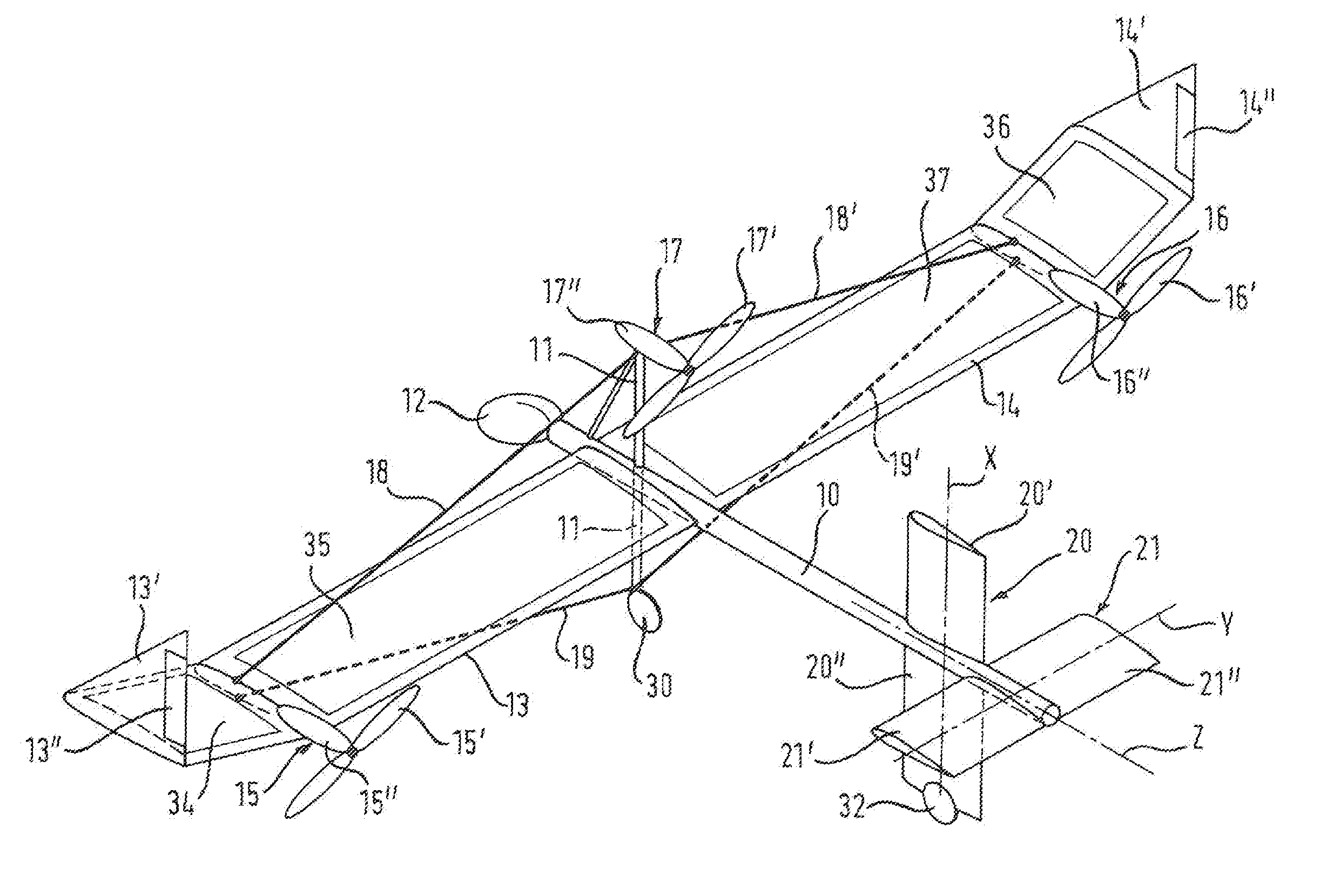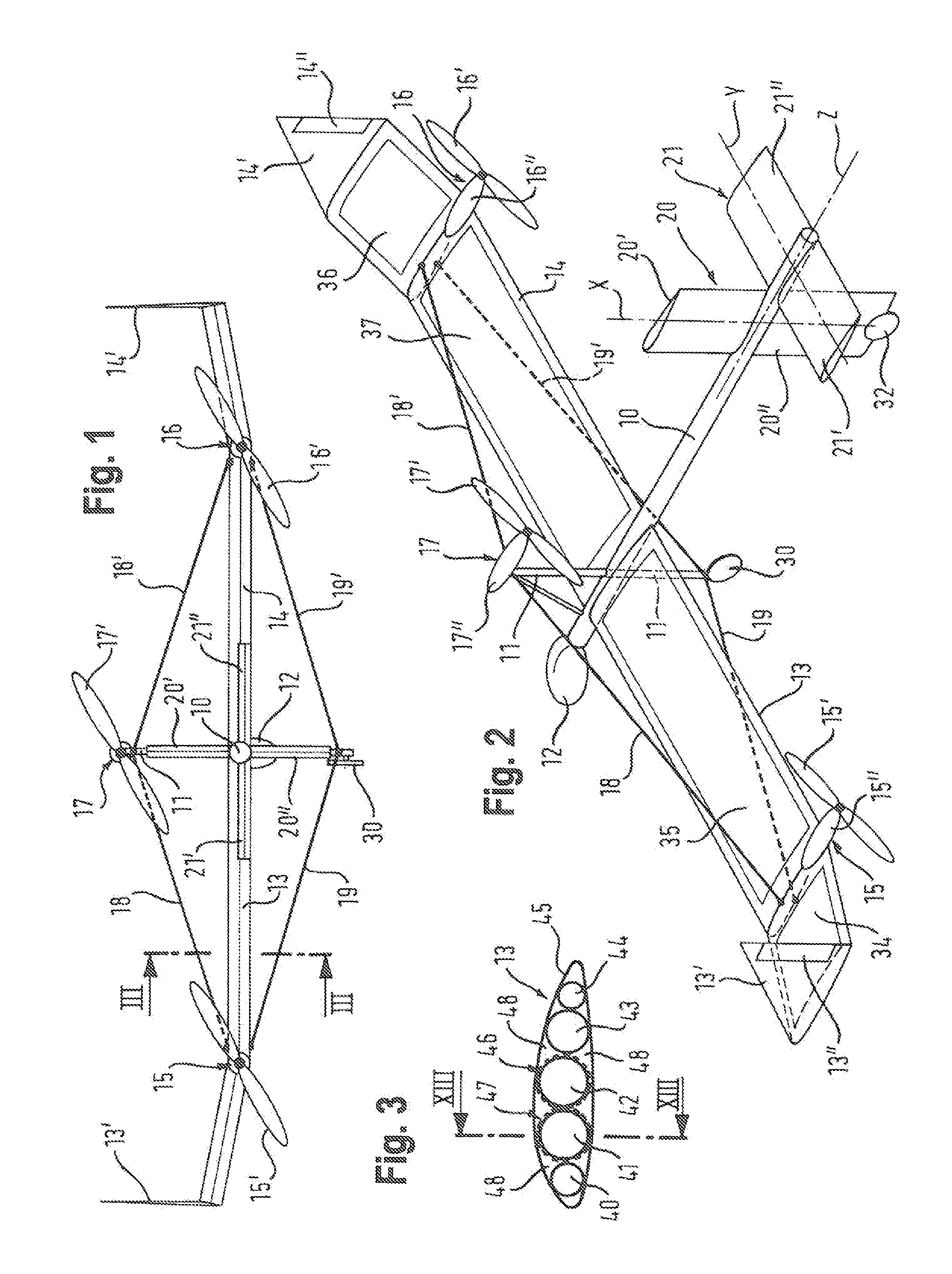High Altitude Aircraft, Aircraft Unit and Method for Operating an Aircraft Unit
a technology for aircraft and aircraft, applied in the direction of transportation hydrogen technology, transportation and packaging, energy-efficient board measures, etc., can solve the problems of balloon aircraft not being able to achieve the required extent of maneuverability, high cost and complexity of carrying out air space monitoring through satellites, etc., and achieves low drag, high lift, and high lift
- Summary
- Abstract
- Description
- Claims
- Application Information
AI Technical Summary
Benefits of technology
Problems solved by technology
Method used
Image
Examples
Embodiment Construction
[0063]FIG. 1 shows a rear view of a high-altitude aerial vehicle according to the invention in the direction of flight. Two wings 13, 14 are provided on the side of a tubular fuselage 10 (FIG. 2), which has a balloon-like tip 12 at the fuselage nose. A substantially vertically extending winglet 13′, 14′ is provided at the free ends of each wing 13, 14. A propulsion nacelle 15, 16 is attached to each wing 13, 14 at approximately ⅔ the distance from the fuselage, each propulsion nacelle accommodating a motor 15″, 16″, which drives an associated propeller 15′, 16′ in each case. For example, a radar device can be provided in the balloon-like fuselage nose 12, which is designed as a radome.
[0064]A third propulsion nacelle 17 is attached to the top of a guyed pole 11 protruding upward from the wing. The third propulsion nacelle 17 also comprises a motor 17″, which drives an associated propeller 17′. While FIGS. 1 and 2 show the propellers 15′, 16′, 17′ as pusher propellers, the propulsion...
PUM
 Login to View More
Login to View More Abstract
Description
Claims
Application Information
 Login to View More
Login to View More - R&D
- Intellectual Property
- Life Sciences
- Materials
- Tech Scout
- Unparalleled Data Quality
- Higher Quality Content
- 60% Fewer Hallucinations
Browse by: Latest US Patents, China's latest patents, Technical Efficacy Thesaurus, Application Domain, Technology Topic, Popular Technical Reports.
© 2025 PatSnap. All rights reserved.Legal|Privacy policy|Modern Slavery Act Transparency Statement|Sitemap|About US| Contact US: help@patsnap.com



